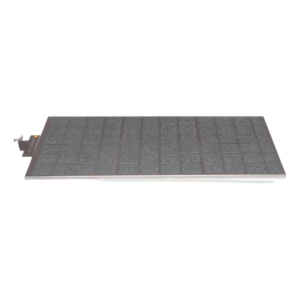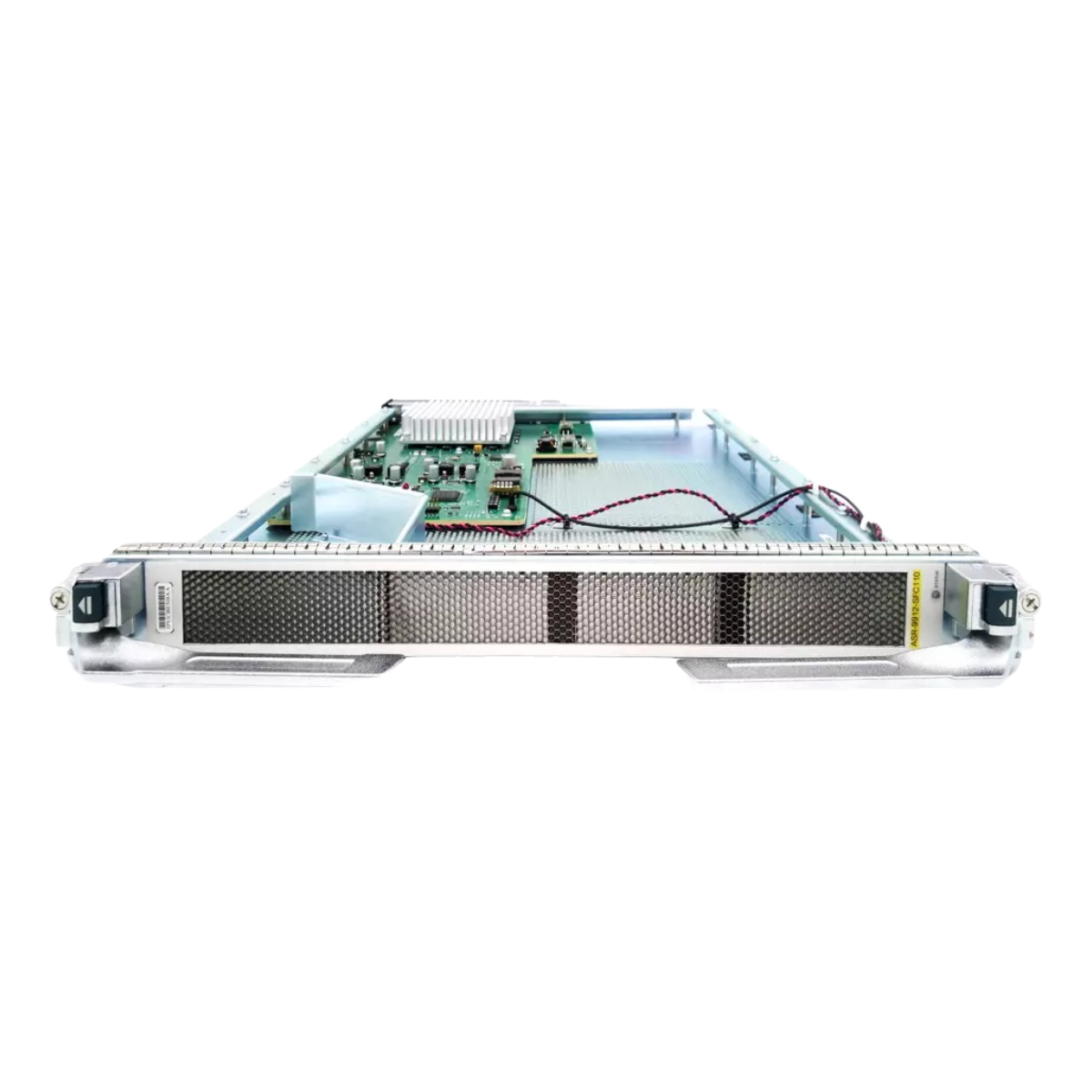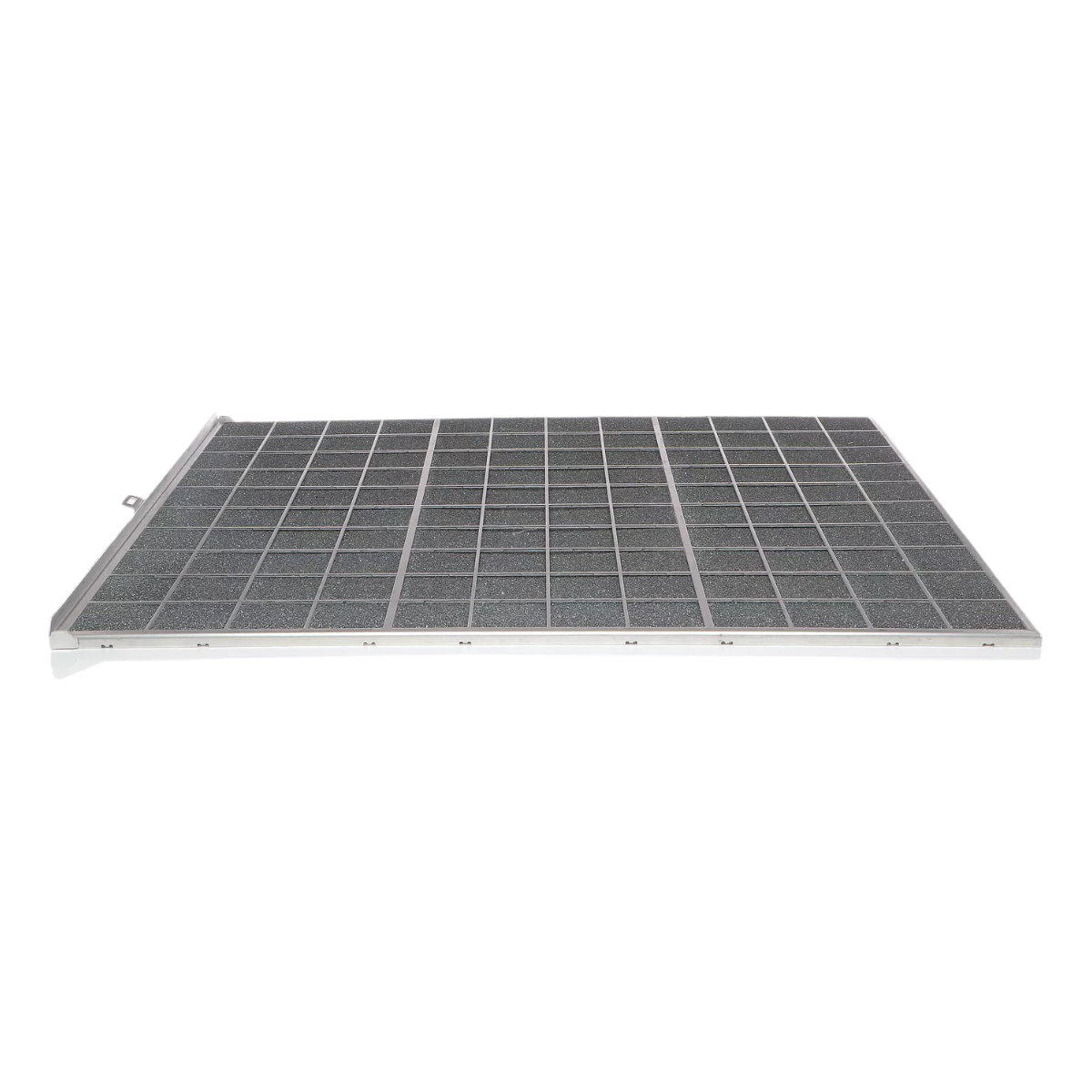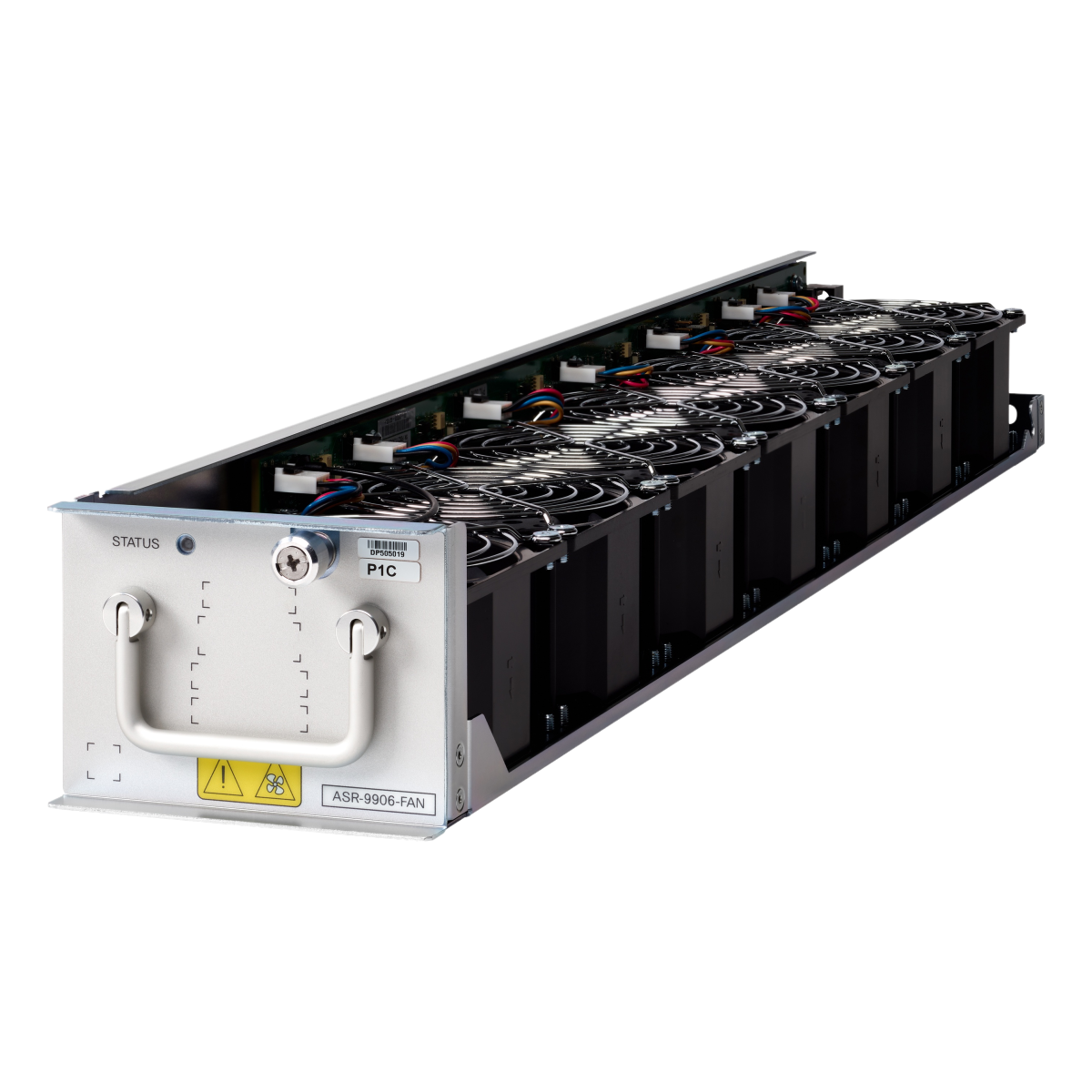Subtotal: $29,622.38
Cisco ASR Switch Fabric Card
Condition: NOB
RMA Warranty
Description
The Cisco ASR 9900 Switch Fabric Card 2 , Switch Fabric Card S and Switch Fabric Card T are the next-generation switch fabrics for the Cisco ASR 9922 Router, ASR 9912 Router, ASR 9910 Router and ASR 9906 Router, supporting high-density 100 Gigabit Ethernet line cards.The system architecture of the Cisco ASR 9900 Switch Fabric Card 2 (ASR 9900 SFC2), Switch Fabric Card S (ASR 9900 SFC-S) and Switch Fabric Card T (ASR 9900 SFC-T) is designed to accommodate new programmable deployment models and convergence of Layer 2 and Layer 3 services, as required by today’s wireline, Data-Center-Interconnect (DCI), and Radio Access Network (RAN) aggregation applications.
The ASR 9900 SFC2, SFC-S, SFC-T features provide exceptional scale, service flexibility, and high availability. Examples include:
● Distributed switch fabric architecture
● Support for up to seven ASR 9900 switch fabric cards SFC2 to provide scalability and high availability on the ASR 9922 and ASR 9912 Routers
● Support for up to five ASR 9900 switch fabric cards SFC-S to provide scalability and high availability on the ASR 9910 Router
● Support for up to five ASR 9900 switch fabric cards SFC-T to provide scalability and high availability on the ASR 9906 Router
● Multistage low-latency nonblocking architecture
The switch fabric is configured as a single stage of switching with multiple parallel planes, and it is responsible for transporting packets from one line card to another. Each fabric plane is a single-stage, nonblocking, packet-based, store-and-forward switch that works with the Cisco ASR 9000 Route Processor 2 and Cisco ASR 9000 Route Switch Processor RSP to support traffic management using the centralized Virtual Output Queue (VOQ) arbitration of the route processor.
The ASR 9922 and ASR 9912 chassis provide 6 + 1 redundancy using an all-active fabric-controllers configuration model that allows for distribution of the traffic load across all seven switch fabrics, taking advantage of the processing capacity of all. If a failure occurs on one fabric card, the remaining 6 active cards continue to forward traffic in the system, with hardware support for zero packet loss on fabric-card Online Insertion and Removal (OIR). Because all fabric cards are active and forwarding traffic, they are all ready to assume the full traffic load.
Compared to the ASR 9922 and ASR 9912, which can accommodate up to seven fabric cards, the ASR 9910 and ASR 9906 use up to five dedicated fabric cards in combination with the fabrics built in on the two route switch processors. As a result, the ASR 9910 and ASR 9906 can provide seven fabrics to switch the traffic.
The ASR 9910 and ASR 9906 chassis also provides 6 + 1 redundancy using an all-active fabric-controllers configuration model that allows for distribution of the traffic load across all seven switch fabrics, taking advantage of the processing capacity of all. If a failure occurs on one fabric (dedicated fabric card or route switch processor’s built-in fabric), the remaining six active fabrics continue to forward traffic in the system, with hardware support for zero packet loss on fabric-card Online Insertion and Removal (OIR). Because all fabric cards are active and forwarding traffic, they are all ready to assume the full traffic load.
Third-generation high-density 100 Gigabit Ethernet line cards support up to seven fabric controllers, whereas second-generation Cisco ASR 9000 Series line cards support up to five fabric controllers. The switch fabric is fully redundant, with one copy of the fabric on each fabric card, and each fabric card carries enough switching capacity to meet the chassis throughput specifications.
Features and benefits of the ASR 9900 SFC2, SFC-S and SFC-T are listed in Table 1.
Table 1. Features and benefits of ASR 9900 SFC2, SFC-S and SFC-T
|
Feature |
Description |
|
Highly scalable fabric |
● Designed to support high 1-, 10-, and 100-Gbps port densities
● Provides built-in scalability for investment protection
|
|
Up to seven switch fabrics |
Offers traffic load balancing simultaneously across up to seven fabrics On the ASR 9922 and ASR 9912 Routers, the seven fabrics are located on seven dedicated fabric cards On the ASR 9910 and ASR 9906, two fabrics are built in on the route switch processor, and five fabrics are located on five dedicated fabric cards |
|
Memoryless switch |
Provides transparent nonblocking, low-latency packet forwarding |
|
Fabric |
Single-stage, nonblocking, and packet-based |
|
Fabric speed |
230 Gbps per fabric card |
|
Fabric redundancy per system |
N + 1 up to seven fabrics |
Table 2 lists the technical specifications for the ASR 9900 SFC2, SFC-S and SFC-T.
Table 2. Technical specifications for the ASR 9900 SFC2, SFC-S and SFC-T
|
Feature |
Description |
|
FPGA |
Field-programmable gate array |
|
Serial Peripheral Interface Flash |
2 SPI Flash with 128 Mb |
|
Nonvolatile RAM (NVRAM) |
128Kb |
|
Double Data Rate 3 (DDR3) |
256 MB |
|
Software release |
Cisco IOS XR Software Release 5.3.0 (for SFC2) Cisco IOS XR Software Release 6.0.1 (for SFC-S) Cisco IOS XR Software Release 6.3.1 (for SFC-T) |
The Cisco ASR 9000 Series Aggregation Services Router delivers superior scale, service flexibility, and high availability into access and aggregation networks. It is powered by Cisco IOS XR Software, an innovative self healing, distributed operating system designed for always-on operation. Cisco IOS XR Software supports a Software-Maintenance-Update (SMU) capability, which allows bug fixing or even small feature releasing without interrupting existing services. It also supports Field-Programmable Device (FPD) upgrades, which can be used to update Field-Programmable Gate Arrays (FPGAs), ROM monitor (ROMmon), and more, while systems are running.
Cisco ASR 9000 Series Carrier Ethernet applications include business services such as Layer 2 VPN (L2VPN) and Layer 3 VPN (L3VPN), Internet Protocol Television (IPTV), Content-Delivery Networks (CDNs), and mobile backhaul transport networks. Features supported include Ethernet Services; L2VPN; IPv4, IPv6, and L3VPN; Layer 2 and Layer 3 Multicast; IP over Dense Wavelength-Division Multiplexing (IPoDWDM); SyncE; Ethernet Operations, Administration, and Management (EOAM) and Multiprotocol Label Switching (MPLS) Operations, Administration, and Management (OAM); Layer 2 and Layer 3 Access Control Lists (ACLs); Hierarchical Quality of Service (H-QoS); MPLS Traffic Engineering Fast Reroute (MPLS TE-FRR); MultiChassis Link Aggregation (MC-LAG); Integrated Routing and Bridging (IRB); Cisco Nonstop Forwarding (NSF) and Nonstop Routing (NSR); Point-to-Multipoint Traffic Engineering (P2MP-TE); Lawful Intercept; Smart Call Home (SCH); and Multigigabit Service Control (MGSCP).
The Cisco ASR 9000 Series Multiservice Edge (MSE) and Ethernet MSE (E-MSE) capabilities allow enterprises to offer powerful business VPN services with strong Service-Level Agreement (SLA) enforcement. Such services typically require simultaneous scale increases across multiple dimensions, for example, the number of Virtual Route Forwarding (VRF) interfaces, IPv4 and IPv6 route scaling, Bidirectional Forwarding Detection (BFD) sessions, and instances of Border Gateway Protocol (BGP) Cisco NSR interfaces. A Cisco ASR 9900 system configuration requiring high multiple-dimensional scale requires the Service-Edge (SE) optimized route processor model to support the increased system scale.
Table 3 provides details about the ASR 9900 SFC2, which supports the ASR 9912 and ASR 9922 chassis (thereby providing common sparing) and the ASR 9900 SFC-S and SFC-T, which supports the ASR 9910 and ASR 9906 chassis, respectively. The ASR 9922, ASR 9912, ASR 9910 and ASR 9906 systems are designed to the same high standards of performance and reliability, and they feature the same power and thermal innovations.
Table 3. Product specifications
Cisco Services for Cisco ASR 9000 Series Route Processors
Through a lifecycle services approach, Cisco delivers comprehensive support to service providers to help them successfully deploy, operate, and optimize their Cisco Prime Evolved Programmable Networks. Cisco Services for the Cisco ASR 9000 Series Aggregation Services Routers provide the services and proven methodologies that help assure service deployment with substantial return on investment, operational excellence, optimal performance, and high availability. These services are delivered using leading practices, tools, processes, and lab environments developed specifically for Cisco ASR 9000 Series deployments and post implementation support.
The Cisco Services team addresses your specific requirements, mitigates risk to existing revenue-generating services, and helps accelerate time to market for new network services.
Table 4 provides ordering information for the Cisco ASR 9900 SFC2 and SFC-S.
Table 4. Ordering information
|
Product Description |
Supported Software Release |
Part Number |
|
ASR 9900 Series Switch Fabric Card 2 |
Cisco IOS XR Software Release 5.3.0 onwards |
A99-SFC2 |
|
ASR 9900 Series Switch Fabric Card 2, Spare |
Cisco IOS XR Software Release 5.3.0 onwards |
A99-SFC2= |
|
ASR 9910 Switch Fabric Card |
Cisco IOS XR Software Release 6.0.1 onwards |
A99-SFC-S |
|
ASR 9910 Switch Fabric Card, Spare |
Cisco IOS XR Software Release 6.0.1 onwards |
A99-SFC-S= |
|
ASR 9906 Switch Fabric Card |
Cisco IOS XR Software Release 6.3.1 onwards |
A99-SFC-T |
|
ASR 9906 Switch Fabric Card, Spare |
Cisco IOS XR Software Release 6.3.1 onwards |
A99-SFC-T= |









Ryker (verified owner) –
Very well worth the money.